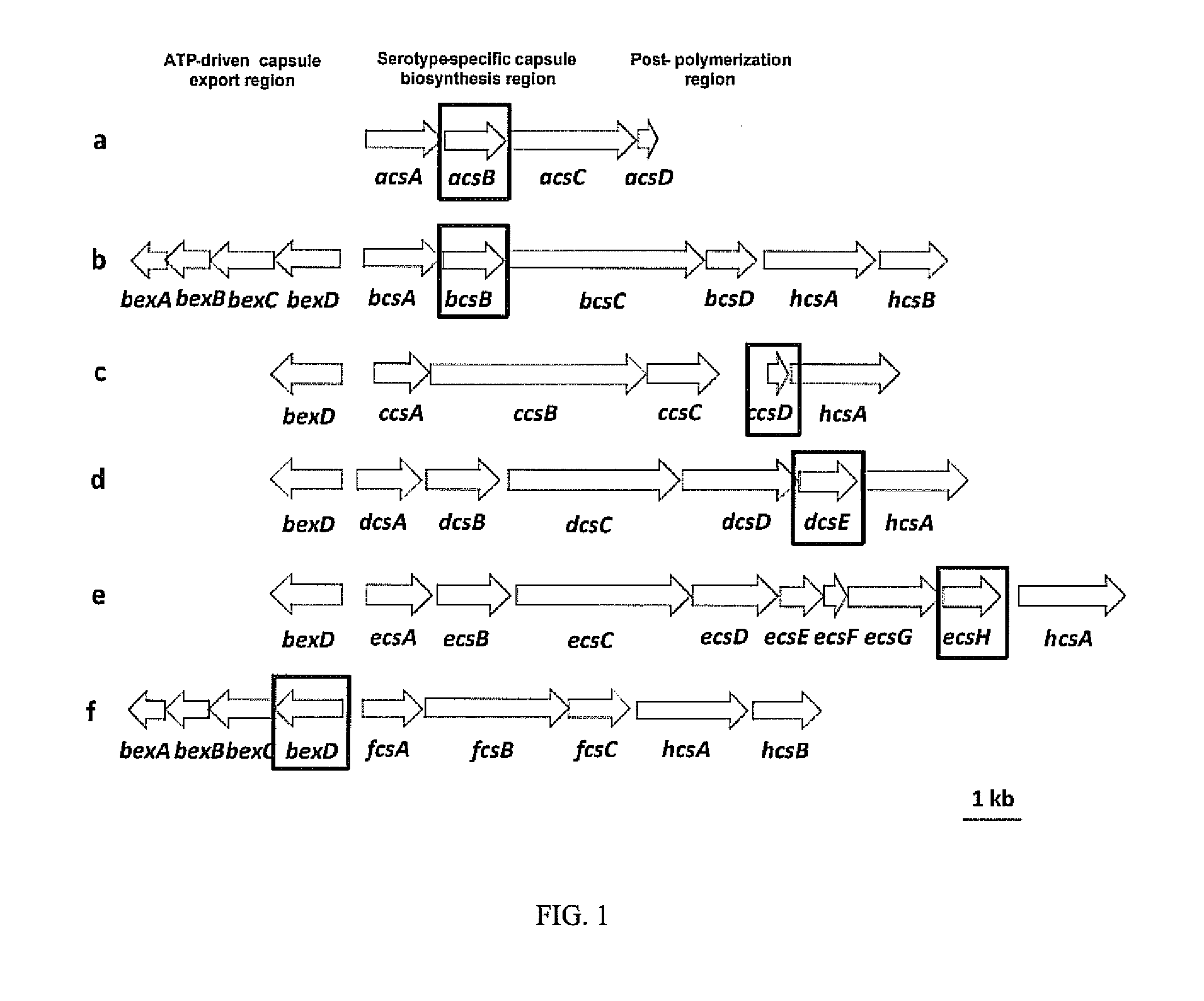Selective detection of haemophilus influenzae
a technology of haemophilus influenzae and detection method, applied in the field of selective detection of haemophilus influenzae, can solve problems such as difficulty in interpretation
- Summary
- Abstract
- Description
- Claims
- Application Information
AI Technical Summary
Benefits of technology
Problems solved by technology
Method used
Image
Examples
example 1
Preparation of DNA from Clinical Isolates
[0072]The clinical isolates tested in this study are submitted to the Meningitis Laboratory at the Centers for Disease Control and Prevention (CDC) through Active Bacterial Core Surveillance (ABCs) or routine surveillance as described by Mothershed, E. A., et al., 2004, Journal of Clinical Microbiology, 42:320-28. Bacterial strains include ATCC strains, clinical invasive isolates and carriage isolates. Clinical invasive isolates are collected as part of the Active Bacterial Core surveillance of the Centers for Disease Control and Prevention's Emerging Infectious Program (http: / / www.cdc.gov / abcs / index.htm). This population and laboratory-based surveillance system includes 10 states: California (3 San Francisco Bay area counties), Colorado (5 Denver area counties), Connecticut, Georgia, Maryland, Minnesota, New York (15 Albany and Rochester area counties), Oregon, Tennessee (11 urban counties) and New Mexico. Carriage isolates of Hi and Haemoph...
example 2
PCR and Sequencing of Hie, Hid, and Hie Region II and hpd
[0074]Sequencing templates are prepared by conventional PCR. For sequencing of Hic, Hid, and Hie the forward primer HiBexDR3 (5′ CCT CTG GTG TCT TAC CTG C 3′ (SEQ ID NO: 25)) and reverse primer HiHcsAR3 (5′ GCA TCG GCT TGA CCA TAT TTC 3′ (SEQ ID NO: 26)) are used. Sequencing of hpd is performed using forward primer hpdFl3 (5′ ACTTTAGCCCTTTCTTTATTAGCA 3′ (SEQ ID NO: 27)) or hpdR557-seq (5′ TTTCAGCAGCAATATCTTTACCAT 3′ (SEQ ID NO: 29)) and reverse primers hpdR1061 (5′ CTTTTAAGAATTCCACGCCAGTAT 3′ (SEQ ID NO: 28)) or hpdF474-seq (5′ TATCCAAGGCTTAGAAAAATCCAC 3′ (SEQ ID NO: 30)). Thermocycler parameters are 4 minutes at 94° C.; 10× (1 minute at 94° C., 1 minute at 55° C., 8 minutes at 68° C.); 20× (1 minute at 94° C., 1 minute at 55° C., 8 minutes +5 seconds per round at 68° C.); 8 minutes at 68° C.; 4° C. indefinite hold. The master mix includes the following reagents for a 25.5-μL total reaction volume per reaction: 20.25 μL steril...
example 3
Primer and Probe Design
[0077]All primer walking and sequencing primers are designed by hand. For RT-PCR primer and probe design, a consensus sequence of each target gene is generated using SeqMan and target gene sequences generated from Hi of each respective serotype. Each consensus sequence is entered into Primer Express Software for RT-PCR Version 3.0 (Applied Biosystems, Carlsbad, Calif.), with the default parameters for TaqMan quantification changed to maximum probe length of 35 nt, and minimum and maximum amplified region lengths of 150 and 300 nt, respectively.
PUM
| Property | Measurement | Unit |
|---|---|---|
| volume | aaaaa | aaaaa |
| volume | aaaaa | aaaaa |
| nucleic acid | aaaaa | aaaaa |
Abstract
Description
Claims
Application Information
 Login to View More
Login to View More - R&D
- Intellectual Property
- Life Sciences
- Materials
- Tech Scout
- Unparalleled Data Quality
- Higher Quality Content
- 60% Fewer Hallucinations
Browse by: Latest US Patents, China's latest patents, Technical Efficacy Thesaurus, Application Domain, Technology Topic, Popular Technical Reports.
© 2025 PatSnap. All rights reserved.Legal|Privacy policy|Modern Slavery Act Transparency Statement|Sitemap|About US| Contact US: help@patsnap.com

